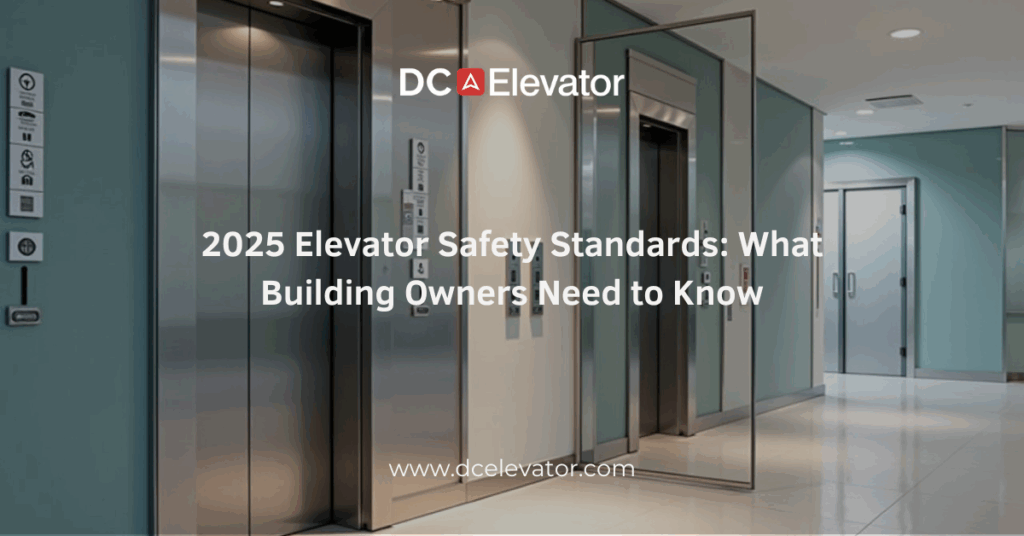Did you know that elevator codes and safety standards are updated regularly to keep pace with technology, building design, and public safety needs? For building owners and facility managers, 2025 brings key changes to elevator safety requirements that could directly affect compliance, tenant satisfaction, and long-term operational costs.
These updates aren’t just technical details—they’re part of your responsibility to ensure the people who use your building’s elevators every day can do so with confidence. Whether you manage a commercial high-rise, a residential complex, or a healthcare facility, understanding the 2025 standards now will help you plan upgrades, avoid costly fines, and maintain your building’s reputation.
Why the 2025 Elevator Safety Standards Matter
The American Society of Mechanical Engineers (ASME) and other regulatory bodies periodically revise elevator codes to reflect advancements in safety, accessibility, and performance. These updates are designed to protect passengers, improve system reliability, and ensure that elevators keep up with evolving building requirements.
For 2025, the changes focus on three core areas:
-
Passenger safety enhancements – Improved door sensors, emergency communication systems, and fire safety protocols.
-
Accessibility compliance – Updated requirements to ensure elevators meet or exceed ADA guidelines.
-
Operational reliability – Stricter maintenance and inspection intervals to minimize downtime and hazards.
Key Changes to Be Aware Of
1. Enhanced Door Protection Systems
New standards require advanced motion detection that goes beyond simple infrared sensors. These systems are designed to detect small objects, mobility aids, or even children approaching, ensuring doors don’t close prematurely.
2. Emergency Communication Upgrades
Elevators must now provide clear, two-way voice communication for passengers in distress, with options for hearing-impaired users. This means older phone-only systems may no longer be compliant.
3. Updated Fire and Earthquake Safety Requirements
For buildings in regions prone to natural disasters, new protocols mandate more rigorous safety features, such as automatic recall to designated floors and enhanced fire-rated materials.
4. ADA Accessibility Improvements
The 2025 updates expand requirements for control panel height, button size, and tactile markings to better serve passengers with disabilities.
How Building Owners Can Prepare
-
Schedule a Compliance Review – Have a certified elevator inspector assess your system against the new 2025 requirements.
-
Plan for Modernization – If your elevator is 15+ years old, upgrades may be more cost-effective than constant retrofits.
-
Budget Early – Allocate funds for potential hardware updates, software upgrades, and safety retrofits before deadlines.
-
Document Maintenance – Keep detailed service logs to demonstrate compliance during inspections.
The 2025 elevator safety standards aren’t just another set of regulations—they’re an opportunity to improve reliability, accessibility, and passenger trust in your building’s vertical transportation. Addressing these updates now can save you from unexpected expenses and operational disruptions down the line.
If you’re unsure where your elevators stand with the new requirements, our experts can perform a thorough compliance check and recommend the best path forward. Contact us today to schedule your 2025 elevator safety assessment.
